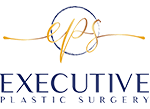Breast self-exams are an essential component of women’s healthcare routine, empowering individuals to monitor their breast health and detect any abnormalities early on. By conducting regular self-exams, you take an active role in your well-being, potentially identifying changes that may require further medical attention. In this article, we discuss the importance of breast self-exams, how to perform them effectively, and when to seek professional evaluation.
The Importance of Breast Self-Exams
Breast self-exams play a vital role in the early detection of breast cancer and other breast-related conditions. Detecting abnormalities at an early stage significantly increases treatment options and improves the prognosis. By familiarizing yourself with the normal look and feel of your breasts, you can identify any changes, such as lumps, skin dimpling, or nipple discharge. Breast self-exams are not a substitute for mammograms or clinical examinations, but they complement these screening methods, allowing you to proactively identify potential issues.
It is recommended to perform breast self-exams once a month. Ideally, conduct the exam a few days after your menstrual period when your breasts are less likely to be swollen or tender. For women who no longer menstruate, choose a specific day each month to perform the exam.
How to Perform a Breast Self-Exam:
- Preparation: Find a comfortable and private space where you can perform your breast self-exam. Standing in front of a mirror can be helpful for visual inspection, so ensure adequate lighting in the room.
- Visual Inspection: Start by standing in front of the mirror with your arms at your sides. Examine your breasts visually, looking for any changes in size, shape, or contour. Pay attention to any dimpling, puckering, or changes in skin texture. Check for nipple discharge or any visible abnormalities. Raise your arms overhead and observe for any changes in breast symmetry or contour.
- Manual Examination: Next, lie down on a flat surface, such as your bed, with a pillow under your right shoulder and your right arm behind your head. Use the pads of your fingers on your left hand to examine your right breast. Begin at the outer edge and move your fingers in small circular motions, gradually working toward the nipple.
- Cover the Entire Breast: Ensure you cover the entire breast, including the upper chest and armpit area (axilla). Use three different pressure levels – light, medium, and firm – to thoroughly examine all breast tissue. Pay close attention to any lumps, knots, or thickening that feels different from the surrounding tissue.
- Nipple Examination: Finally, gently squeeze each nipple between your thumb and index finger, checking for any discharge or abnormalities. Note any changes in nipple color, shape, or inversion. Remember that it’s normal for breasts to vary in size and shape, but any persistent changes or new findings should be reported to your healthcare provider.
When to Seek Professional Evaluation
While most changes detected during breast self-exams are benign, it’s crucial to consult a healthcare provider if you notice any of the following:
- New lump or mass in the breast or underarm
- Persistent changes in breast size or shape
- Skin changes such as redness, dimpling, or thickening
- Nipple discharge, especially if it’s bloody or spontaneous
- Persistent breast pain or discomfort
If you’re unsure about any changes or have concerns about your breast health, don’t hesitate to schedule a consultation with the experts at Executive Plastic Surgery for an evaluation. Our team of experienced professionals can offer comprehensive assessments and further diagnosis, helping you identify and treat potential breast concerns at the earliest stage possible.

